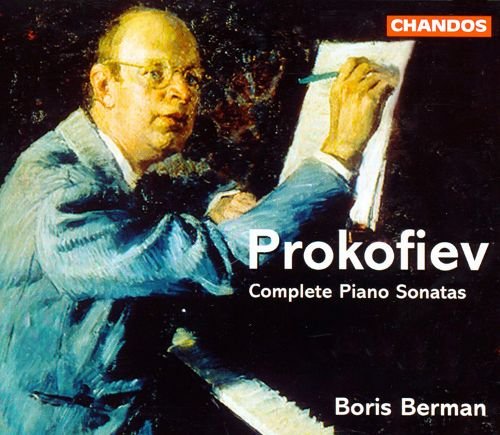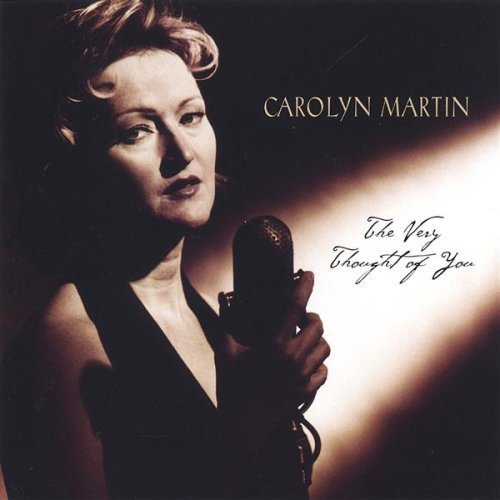Boris Berman - Prokofiev: Complete Piano Sonatas (1998)

Artist: Boris Berman
Title: Prokofiev: Complete Piano Sonatas
Year Of Release: 1998
Label: Chandos Records
Genre: Classical
Quality: FLAC (image+.cue,log,scans)
Total Time: 03:07:35
Total Size: 626 Mb
WebSite: Album Preview
Tracklist: Title: Prokofiev: Complete Piano Sonatas
Year Of Release: 1998
Label: Chandos Records
Genre: Classical
Quality: FLAC (image+.cue,log,scans)
Total Time: 03:07:35
Total Size: 626 Mb
WebSite: Album Preview
CD 1:
1 Sonata No. 1, Op. 1 7:54
in F minor - f-Moll - fa mineur
Allegro
Sonata No. 2, Op. 14 18:32
in D minor - d-Moll - ré mineur
2 I Allegro, ma non troppo 5:49
3 II Scherzo: Allegro marcato 1:56
4 III Andante 6:05
5 IV Vivace - Moderato - Vivace 4:29
6 Sonata No. 3, Op. 28 7:20
in A minor - a-Moll - la mineur
Allegro tempestoso - Moderato - Allegro tempestoso
Sonata No. 4, Op. 29 17:17
in C minor - c-Moll - ut mineur
7 I Allegro molto sostenuto 6:07
8 II Andante assai 7:10
9 III Allegro con brio, ma non leggiere 3:54
Sonata No. 5 (original version), Op. 38 16:02
in C major - C-Dur - ut majeur
10 I Allegro tranquillo 6:01
11 II Andantino 4:37
12 III Un poco allegretto 5:15
CD 2:
Sonata No. 5 (revised version), Op. 135 15:38
in C major - C-Dur - ut majeur
1 I Allegro tranquillo 6:02
2 II Andantino 4:54
3 III Un poco allegretto 4:36
Sonata No. 6, Op. 82 27:20
in A major - A-Dur - la majeur
4 I Allegro moderato 8:33
5 II Allegretto 4:26
6 III Tempo di valzer lentissimo 7:20
7 IV Vivace 6:49
Sonata No. 7, Op. 83 18:35
in B flat major - B-Dur - si bémol majeur
8 I Allegro inquieto - Andantino 8:16
9 II Andante caloroso 6:30
10 III Precipitato 3:45
CD 3:
Sonata No. 8, Op. 84 31:46
in B flat major - B-Dur - si bémol majeur
1 I Andante dolce - Allegro moderato - Andante dolce, come prima - Allegro 16:31
2 II Andante sognando 4:37
3 III Vivace - Allegro ben marcato - Andantino - Vivace, come prima 10:33
Sonata No. 9, Op. 103 25:03
in C major - C-Dur - ut majeur
4 I Allegretto 8:20
5 II Allegro strepitoso - Andantino - Allegro strepitoso 2:54
6 III Andante tranquillo 7:41
7 IV Allegro con brio, ma non troppo presto 5:56
8 Sonata No. 10 (fragment), Op. 137 1:13
in E minor - e-Moll - mi mineur
Allegro moderato
Performers:
Boris Berman, piano
Centenary celebrations are all very well for promoting and focusing attention on their given subject (one day the lucky centenarian will be perhaps fortunate enough to be alive to enjoy the monetary rewards of such a celebration), their one disadvantage, however, is the bewildering array of recordings that they place before the public. The Prokofiev celebrations are no exception. The last year or so has seen no less than three new complete sonata cycles (Lill, Nissman and McLachlan) with Berman's complete survey of the piano music on Chandos well on its way and Gavrilov's cycle for DG promised early next year. Doubtless contained within these new recordings there are some impressive performances indeed. But in truth very few, if any, have displaced the classic recordings that have been around long before the celebrations began (the possible exception being Kissin's remarkable recording of the sixth for RCA)—Richter's Eighth, Pogorelich's Sixth and Pollini's and Horowitz's Seventh still remain obligatory purchases in building a Prokofiev collection.
But what of the latest batch? Donohoe's performances of the 'War Sonatas' are the result of a long standing relationship with the music—and it shows. His account of the Sixth has certainly grown in strength, maturity and stature since his first recording for EMI in 1983 (nla), but it must be said that this is not a high voltage, sensational performance in the manner of Kissin or Pogorelich (DG). Instead, Donohoe favours (as does Lill on ASV) a more broadly symphonic, more cogently unified view of the work, and frequently sheds light on a host of hidden subtleties—harmonic and rhythmic, as well as inner details. These qualities are also prevalent in Sonatas Nos. 7 and 8.
Immediate reactions to Donohoe's account of the Seventh Sonata were, I have to admit, not entirely favourable, and even now I confess to niggling reservations. Differences between Donohoe and Pollini are extreme. The latter's dynamic twists and turns and subtle contrasting of ideas in the first movement, are not characteristics to be found in this performance. Donohoe's approach is more muscular, more solid and more openly angry in approach. And slower, much slower. The blistering Precipitato last movement certainly has plenty of excitement and punch (incidentally Donohoe makes a minor textural alteration at bar 117 by dropping the B flat in the bass down an octave), but I find the closing bars come perilously close to tripping over themselves. Nevertheless this is a performance that I find myself warming to more on each successive hearing.
The Eighth on the other hand I found immediately impressive. The first movement has a fine sense of flow, with plenty of dynamic contrast (though even Donohoe's dynamic range pales in comparison with Richter). But even more impressive I felt was his overall sense of structure, not only within individual movements, but throughout the sonata as a whole. The finale is a veritable tour de force.
Turning to Berman's Eighth I found the first movement a shade too slow and introspective. Also the central climax is underpowered compared to either Donohoe or Lill. The remaining movements however contain some exceptionally fine playing, particularly his beautifully characterized account of the final movement. The couplings offer us two Prokofiev rarities in the shape of the Four Pieces Op. 3 and the Ten Pieces from Cinderella Op. 97. Despite the early opus number and the obvious influences of Schumann (''Story'') and Mussorgksy (''Jest'') in the Four Pieces they auger much of Prokofiev style to come. The Cinderella transcriptions are particularly delightful and charming, and those familiar with his recording of the Ten Pieces from Romeo and Juliet on Vol. 1 ((CD) CHAN8851, 2/91) will know just how effective Berman is in capturing the atmosphere and charm of these character pieces. Both Berman and Donohoe have been exceptionally well served by their engineers.'
But what of the latest batch? Donohoe's performances of the 'War Sonatas' are the result of a long standing relationship with the music—and it shows. His account of the Sixth has certainly grown in strength, maturity and stature since his first recording for EMI in 1983 (nla), but it must be said that this is not a high voltage, sensational performance in the manner of Kissin or Pogorelich (DG). Instead, Donohoe favours (as does Lill on ASV) a more broadly symphonic, more cogently unified view of the work, and frequently sheds light on a host of hidden subtleties—harmonic and rhythmic, as well as inner details. These qualities are also prevalent in Sonatas Nos. 7 and 8.
Immediate reactions to Donohoe's account of the Seventh Sonata were, I have to admit, not entirely favourable, and even now I confess to niggling reservations. Differences between Donohoe and Pollini are extreme. The latter's dynamic twists and turns and subtle contrasting of ideas in the first movement, are not characteristics to be found in this performance. Donohoe's approach is more muscular, more solid and more openly angry in approach. And slower, much slower. The blistering Precipitato last movement certainly has plenty of excitement and punch (incidentally Donohoe makes a minor textural alteration at bar 117 by dropping the B flat in the bass down an octave), but I find the closing bars come perilously close to tripping over themselves. Nevertheless this is a performance that I find myself warming to more on each successive hearing.
The Eighth on the other hand I found immediately impressive. The first movement has a fine sense of flow, with plenty of dynamic contrast (though even Donohoe's dynamic range pales in comparison with Richter). But even more impressive I felt was his overall sense of structure, not only within individual movements, but throughout the sonata as a whole. The finale is a veritable tour de force.
Turning to Berman's Eighth I found the first movement a shade too slow and introspective. Also the central climax is underpowered compared to either Donohoe or Lill. The remaining movements however contain some exceptionally fine playing, particularly his beautifully characterized account of the final movement. The couplings offer us two Prokofiev rarities in the shape of the Four Pieces Op. 3 and the Ten Pieces from Cinderella Op. 97. Despite the early opus number and the obvious influences of Schumann (''Story'') and Mussorgksy (''Jest'') in the Four Pieces they auger much of Prokofiev style to come. The Cinderella transcriptions are particularly delightful and charming, and those familiar with his recording of the Ten Pieces from Romeo and Juliet on Vol. 1 ((CD) CHAN8851, 2/91) will know just how effective Berman is in capturing the atmosphere and charm of these character pieces. Both Berman and Donohoe have been exceptionally well served by their engineers.'








